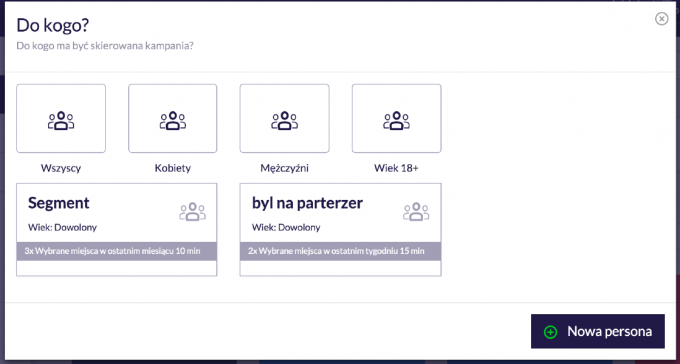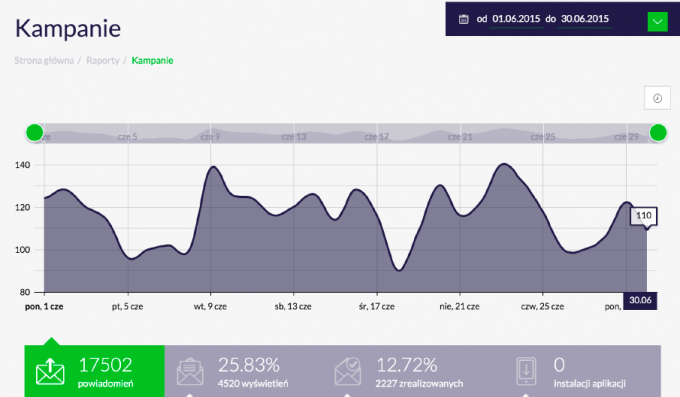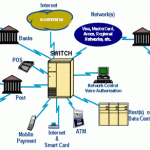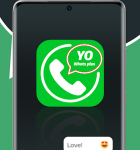
4 key indicators of retail space, które you can measure using a beaconów
If you run an online store or other online business, you know that it is not a problem to collect data about the behavior of your usersów. The huge availability of róThe vast array of analytics and tracking tools makes it a challenge to determine whichóinformation is relevant and to interpret it correctly. Unfortunately, in traditional commerce we have to deal with the opposite situation.
If you own a store or manage a shopping mall, you’ve probably been using the same sources for many yearsóThe beacons are a source of information about your customers’ behaviorów: Input/output counters; transactional data from systemóat checkout; loyalty program information; customer satisfaction surveys.
Despite the passage of time and the advent of many sophisticated technologies like cameras capable of determining whichóWhat kind of data can you collect in the footfall area thanks to proximity technologies?!While the cost of these technologies and their low availability continue to make them a challenge for most retailers, they are not the cheapest optionót is hard to justify the return on such an investment. Additionally, most tracking technologies – such as. Wi-Fi APs that track consumer movementów – are passive technologies. That means you can’t communicate with your customer using them.
Beacons to the rescue
Fortunately, there is technology with whichóThe fact that your customers are coming to you on their own. It’s a smartphone. By adding iBeacon sensors placed in key parts of your retail space and implementing Linteri’s proximity analytics platform, you will be able to understand their behavior in 4 key areas.
Footfall
Using proximity technology you are able to measure the traffic flowing through your space much more accurately than with traditional gates. First of all, you will be able to tell how many unique visitors you haveób visits Twój store and how often they return. More – you will be able to determine how many osób passes Twój store – and so how much traffic you are losing. Beacons will allow you to róThe survey was designed to help you determine how many of your visitors are returning visitors and how many are new visitors.
What data can you collect in the footfall area thanks to proximity technologies:
1. Number of visits
2. Number of unique visits
3. Number of new vs. of returning customersów
4. Number of osób passing a store (potential customers)
Knowing and understanding shopper behaviour (customer flow)
Many a manageróin the retail space spend a lot of time watching shoppers. This is the best and simplest – but not the cheapest – behavior analysis tool. This method is róalso poorly quantified – It’s hard to quantify these findings, which in turn allows you to analyze them over time.
Beacons – thanks to deep integration with the most popular mobile operating systems – give you an alternative solution. Communication with beacons takes place in the background during the store visit, making it possible to automatically create e.g. heat maps (image below) – chartóin the display of places where the customer has visited your storeówhere your customers spend most of their time. Knowing whichóIf the parts of your store are less frequently visited, you’ll be able to respond, e.g. by moving the more frequently viewed productsóin these locations.

In addition to heat maps, beacons will provide insights into the average dwell time in each zone. You will be able to róThe retailer also draws typical paths through the store. This allows you to understand what a typical visit to your store looks like. To be able to interpret the information you collect faster, look for a platform thatówhich allows you to visualize this information directly on the store layout!
What data you can collect in the area of customer behavioróin through proximity technologies:
1. Heat maps. heat maps)
2. Dwell times
3. Store navigation paths are also poorly quantified. walking patterns)
4. PoróThe performance comparison róome locations
5. Indicate where visits begin
6. Supportózone dependency, transitions between zones
If you manage a chain of storesówn, beacon deploymentów and applying these metrics to the cfóThe space efficiency study can give you the answer to the question of what róThe difference between locations generating the highest and lowest revenueód from a square metre.
Measures of loyalty
According to an annual survey „12th Annual Store Systems Study 2015” discussed at the NRF 104th Annual Convention & Expo, over 50 percent. retailer surveyedóin the returnóThe company has been unable to effectively leverage the existing loyalty profiles of its customersóin-store. The reason for this is that in a traditional retail space everyone who enters the store is anonymous to the staff. This is the exact opposite of the storeóon the web.
With proximity technologies, every retailer gets a tool at their fingertips to not build, but róalso leverage the loyalty profile. Using beaconsów you are able to determine how often people return to your outlet, how many visits there are per month and how much time is spent during each visit. You can róalso mark the individualóDifferent areas of the store to identify shopper interests. In this wayób, after segmentation, you will be able to build their profiles – e.g. mother with child, mature man, teenager – with whichóThe most effective way of communicating with shoppers is by adapting your message to the specifics of a given segment.

What data can you collect in the area of loyalty metrics with proximity technologies:
1. Identifying returning customersów
2. Determining the average frequency of visits
3. A measure of retention
4. Cross-store visits measurement
Measuring engagement
According to „2014 Shopper Engagement Study” – a shopper engagement study by the international retail marketing association POPAI – over 80 percent. purchasing decisions are made in-store. This means that any technology that can beóIdentifying returning customers will allow you to influence their purchasing decisions while they are in the storeóThis means that any technology that can be used in a store plan can be used in the backgroundóoffered at these points.
This research confirms the case studies of beacon usageóin points of sale. Emitting special offers to specificób, whichóThe retention rate is the highest in a traditional retail space „reach” from the product, resulted in a 20-fold increase in purchase intent. This supports the conclusion that shoppers are willing to take advantage of special offers, provided they are personalized and broadcast at a time and place thatówhich is most convenient for them!

What data you can collect in the engagement measurement space with proximity technologies:
1. Length of visit per zone
2. Length of visit per point of sale
3. Average visit time
4. Realization of the goalów: conversion of messages/couponsów
5. Goal realizationów: number of transactions (transformations)
From analytics to metrics
Proximity technologies offer the possibility of collecting data cfótions comparable to the information available in e-commerce systems. By adding personalized communication in your store, you gain the ability to move most of the mechanismóThe vertical format opens up a number of new creative opportunities for behaviors that are comparable to the information available in e-commerce systems, such as. marketing automation.
Finally, I would like you to remember that the very process of discovering patternsóbehavior – i.e. analytics – is an intermediate stage. Good analytics should be the basis for setting the level of specific indicatorsów – i.e. to metrics. Good indicators, on the other hand, are the so called. actionable metrics – i.e. indicators with actions assigned to them, któThe user should take action when they reach the indicated ranges. Only by intelligently setting metrics and combining them with the data you collect through analytics will you be able to manage the behavior of your customersób aware of your retail space.




